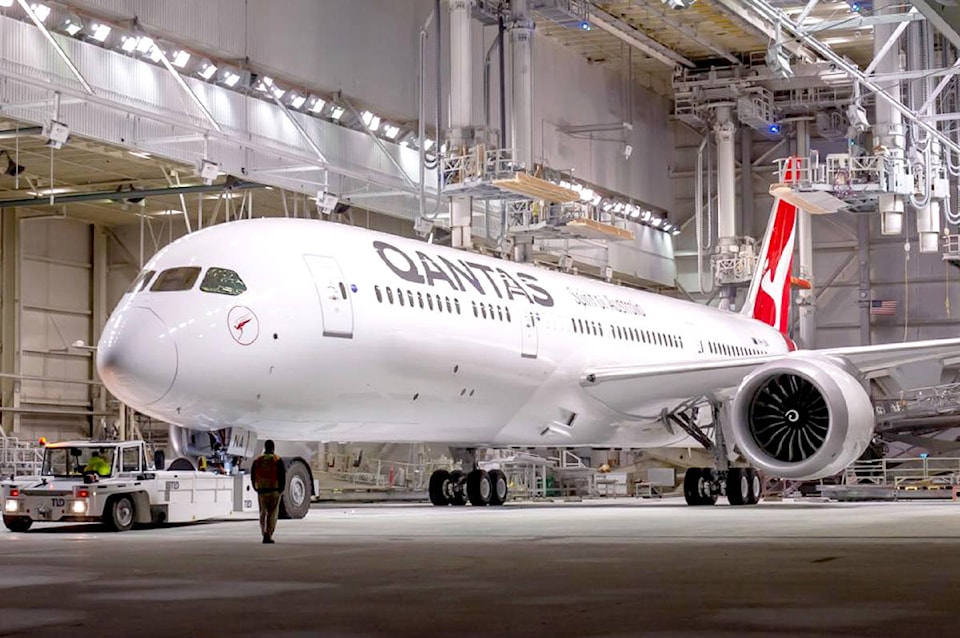Gwynne Dyer
Qantas, the Australian airline, has just test-flown the world’s longest commercial air-route: 10,200 miles (16,500 km.) from New York non-stop to Sydney. There were only 60 passengers aboard the Boeing 787, all in business class, because the plane needed all the rest of the weight for fuel. And, we are told, they danced the Macarena in the empty economy class to stay limber during the 19-hour flight.
I don’t think Greta Thunberg would have been pleased.
There is a Swedish neologism, ‘flygskam’, that has gained some currency among environmental activists in Europe. It means ‘flight-shame’, which is the emotion righteous people should feel if they take a plane trip and contribute to global heating.
Ms Thunberg took a sail-boat across the Atlantic because the fuel that is burned to get each airline passenger to North America causes warming equivalent to about 10% of the average Swede’s annual ‘carbon footprint’. A bit dramatic, maybe, but her point was that flying causes major emissions, and the only way to avoid them is not to fly.
Aviation accounts for around 2.5% of human-caused greenhouse gas emissions at the moment, but the contrails the planes leave in the stratosphere turn into cirrus clouds that reflect heat back to the surface, and that causes an equal amount of heating.
So in reality 5% of current warming is already due to aviation, and industry representatives estimate that the number of people flying annually will almost double (to 8.2 billion) in the next twenty years. By then flying will have grown to 10% of the global heating problem, or even more if we have made good progress on cutting our other emissions. So must we stop flying?
Not necessarily. The problem has been neglected, because the aviation industry was too lazy or stupid to look down the road and start preparing for a future that more attentive people could see twenty years ago. But the fuel problem is not insoluble. In fact, it has already been solved. The solution just needs to be scaled up.
A number of people have been working on DAC (Direct Air Capture of carbon dioxide) for more than a decade already, and the leader in the field, David Keith’s Carbon Engineering, has had a pilot plant running in British Columbia for the past three years.
Keith’s business model involves combining his captured carbon dioxide with hydrogen (produced from water by electrolysis). The electricity for both processes comes from solar power, and the final product is a high-octane fuel suitable for use in aircraft.
It emits carbon dioxide when you burn it, of course, but it’s the same carbon dioxide you extracted from the air at the start. The fuel is carbon-neutral. Scaling production up would take a long time and cost a lot, but it would also bring the price down to a commercially viable level.
The contrails and the cirrus clouds in the stratosphere are a considerably harder problem, but there are a number of measures that would help.
The planes are flying so high for two reasons. The air is less dense up there, so you don’t use so much fuel pushing through it. But the main reason, especially for passenger planes, is that there is much less turbulence in the stratosphere than in the lower atmosphere. If the planes flew down there, they’d be bouncing around half the time, and everybody’s sick-bag would be on their knee.
So what can you do about it? Well, contrails only form in air masses with high humidity, and therefore only affect 10-20% of flights. With adequate information, most of those flights could simply fly around them. Alternatively, fly below 25,000 ft. for that section of the flight, and contrails won’t form anyway.
It will be more turbulent down there, so in the long run we should be building aircraft that automatically damp out most of the turbulence. This is probably best achieved by ducted flows of air that instantly counter any sudden changes of altitude or attitude, but if aircraft designers started incorporating such ducts into their designs today, they’d only come into regular use in about fifteen years’ time.
So the order of business is first, carbon-neutral fuels (half the problem solved); second, flying around or under air masses with high humidity (another quarter solved); and finally, turbulence-damping aircraft technology (most of the rest done).
By the way, how is Greta Thunberg getting home again?
Gwynne Dyer’s new book is ‘Growing Pains: The Future of Democracy (and Work)’.
